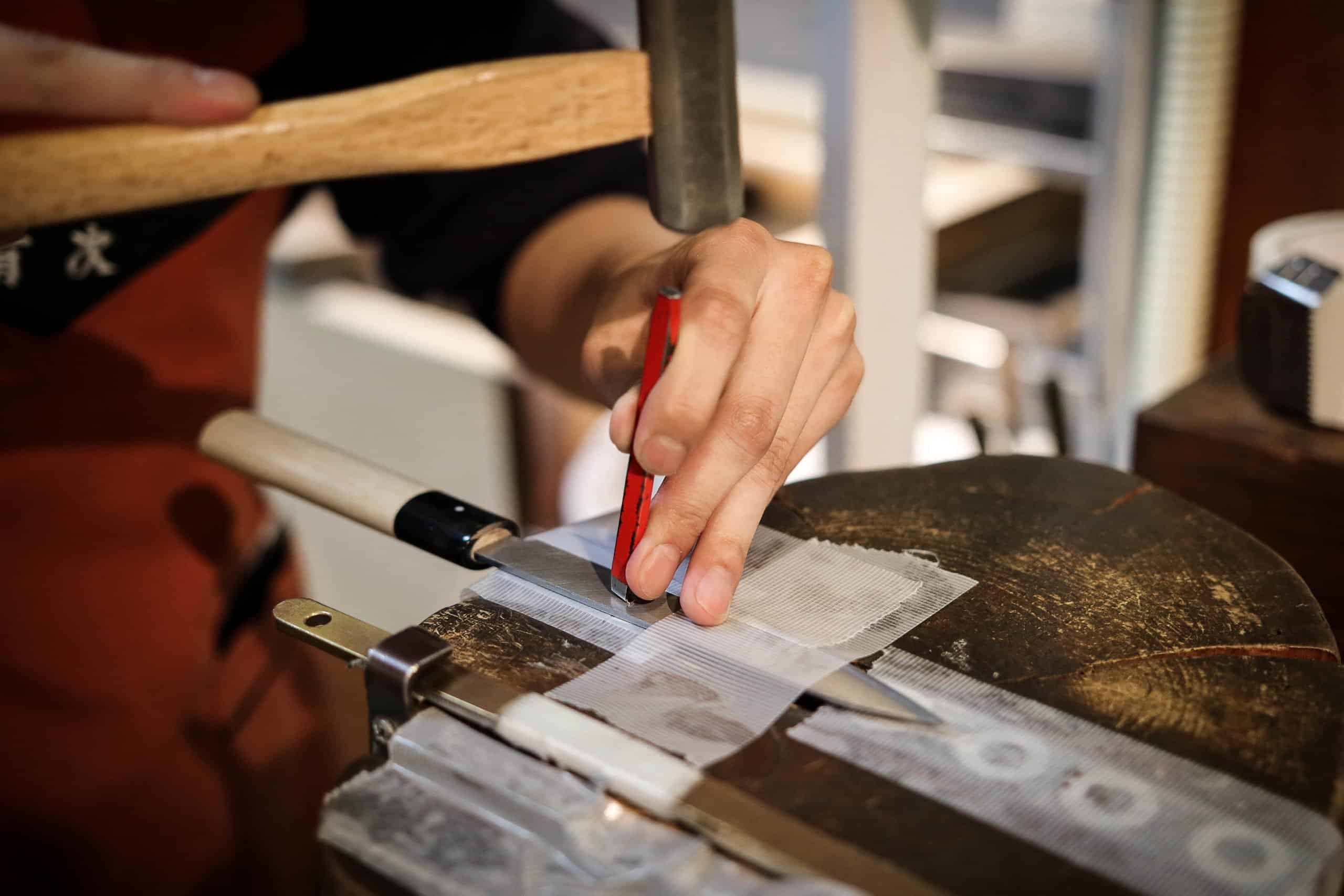From samurai swords to kitchen knives, Japan has mastered the craft of blade making over millennia.
Ask any American of a certain age what they know of Japanese blades, however, and they’ll probably mention Ginsu, the kitchen knives sold on late-night infomercials in the early ’80s. Thing is, Ginsu knives were made in Ohio. Still, there was a good reason that marketers gave them a Japanese-sounding name: No other country can match Japan’s history and expertise with forging steel into sharp blades. Artisanal Japanese knife making is worth exploring — and investing in — on your next visit to the country.
Granted, a high-end kitchen knife won’t come cheap, especially if you visit the mecca of cutlery, Aritsugu, a 550-year-old knife shop in Kyoto’s Nishiki Market that also has Tokyo locations in Tsukiji and Toyosu fish markets. You can expect to spend $400 or more, depending on the size, shape, and maker of the knife you choose. But you won’t be able to find or procure a better blade, and with good care it will last for decades.
To understand why, and to select a knife that’s right for you, first it’s worth diving into the history of Japanese blade crafting.
Starting with the samurai
The art of making swords (katana) for samurai in feudal times dates back at least 1,000 years, with changes in techniques and style along the way that are classified into six eras. All six of these periods punctuate the steel-working tradition known as tamahagane.
Tamahagane steel was made by filling a rectangular clay pot furnace with iron sand, then heating it to 1,800 degrees Fahrenheit — a temperature maintained over a period of up to three days. During that time charcoal would be added to infuse carbon, with the molten steel remixed several times. After the vessel cooled, it was cracked open to reveal a steel block.
Within that block were a few different grades of steel, each with varying levels of carbon and, therefore, strength. Sword makers heated, hammered and folded the steel, removing impurities all the while, then combined them into a single blade. The softer steel was at the core of the blade and the stronger ones comprised the outside.
A single samurai sword contained thousands of folded layers that would take weeks or even months to craft, with specific Shinto rituals performed throughout the process. Durability, sharpness and decorative handles make swords from the 16th and 17th centuries especially collectible and worth tens of thousands of dollars today.
From swords to chef’s knives
All those centuries of experience are represented in today’s artisanal kitchen knives, which are still forged by hand and can take up to a week to craft. And they’re considerably different from the knives you find in the West.
For starters, Japanese blades are edged for either right- or left-handed use — they’re not ambidextrous. Also, Japanese knives are designed in shape and length according to what they’re used for, like cutting noodles, vegetables or even a particular type of fish. Western knives, of course, vary in size for general paring or slicing.
Japanese knife makers start with steel blanks, or flat pieces of metal of a certain length, thickness and hardness based on the types of knives they’re crafting. From there, they begin heating and hammering the metal to give it an even level of hardness throughout the blade. And much like a swordsmith, the maker might layer and fold different types of metal together (those waves you often see along the sides of an expensive blade indicate that intensive process).
The knives are sanded into shape, then baked in a kiln to achieve the desired level of durability. They go through several more rounds of shaping and sanding before a beautiful handle is attached — and, of course, the knife maker stamps a unique signature onto the side of the blade.
Shopping for a knife
When you enter the Aritsugu environment, there’s no feeling you can expect at first other than to be dazzled. You’ll see thousands of knives from Japan’s best craftsmen with a dizzying array of shapes, sizes, lengths and, of course, price tags. The store has only been in its current Kyoto location since 1981, but it’s run by the 18th generation of the family that founded the company in 1560.
The best shopping strategy? Know ahead of time what kind of knife you need most in your kitchen. A vegetable knife? A meat carving knife? That’ll help narrow down the options. A general-purpose Santoku knife, with its super-thin blade for refined slicing and lightweight handling, is always a good option.
From there, the English-speaking staff will show you right- or left-handed options from several different craftsmen. The more famous the maker or the fancier the material of the handle, the higher the price.
After you’ve made your selection, the Aritsugu staff will give the blade its final edge using a large whetstone and even engrave your initials into the side of it if desired. They’ll instruct you on how to keep the blade sharp and package up your purchase for safe transportation back home.
With good care, your knife will last forever — maybe even as long as Aritsugu’s been in business.

